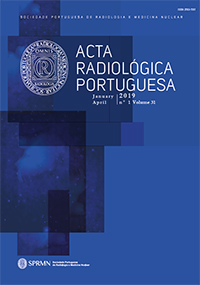Child Abuse: Bone Scintigraphy for the Evaluation of Non-Accidental Lesions
DOI:
https://doi.org/10.25748/arp.14113Abstract
Introduction: Child abuse is a complex problem that must be identified and solved as quickly as possible with a multidisciplinary approach. Bone fractures, usually not life-threatening injuries, are often the strongest indicator of abuse. Medical imaging has thus a crucial role, since fractures are often hidden, with signs and symptoms difficult to interpret, and children may be unable to provide history. Bone scintigraphy has appeared in publications addressing child abuse since the 80’s.
Aim: To assess the role of Bone scintigraphy in child abuse.
Results/Discussion: Some guidelines on approaching child abuse already include bone scintigraphy. In our country, its role and its usefulness remain poorly known.
Studies comparing Radiography and Bone scintigraphy showed that scintigraphy was the only method to identify bone lesions in 4 to 20% of patients. Additionally it helped to clarify misleading lesions.
Conclusion: When evaluating the suspicion of child abuse, the method of choice is the X-ray of the skeleton. Reviewing the literature, however, we conclude that there is no ideal method and that Radiography and Bone Scintigraphy play a complementary, non-competitive role.
We therefore propose the regular performance of Bone Scintigraphy when the X-ray does not identify any lesions, when it presents equivocal findings or when accurately determining the number and location of lesions may have a legal impact.
Downloads
Published
Issue
Section
License
CC BY-NC 4.0


